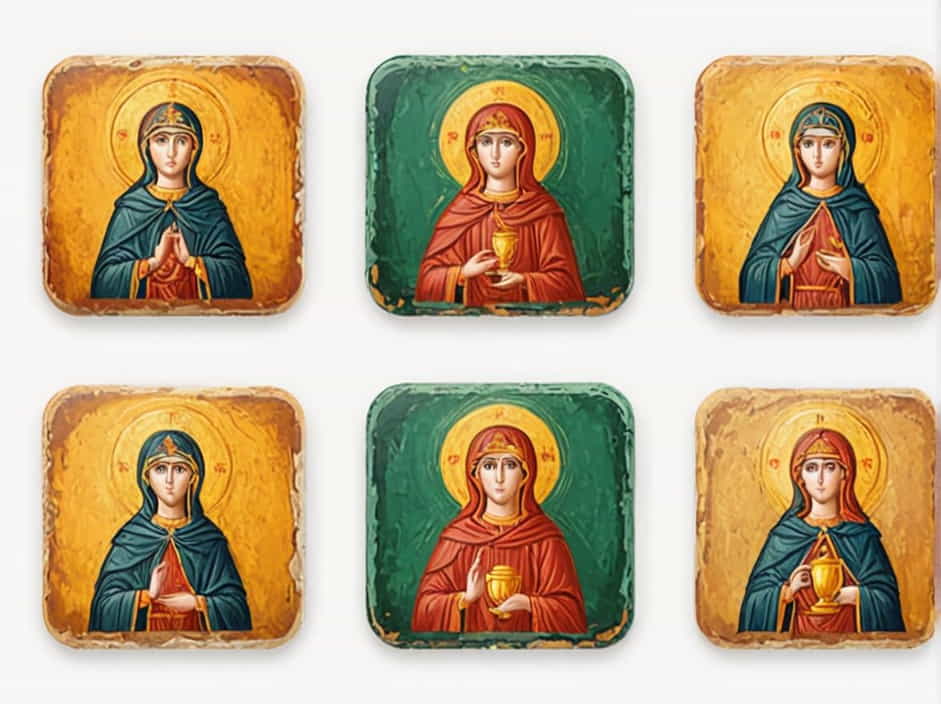Romanesque painting is one of the most significant artistic styles of the Medieval period, flourishing between the 10th and 12th centuries. It developed alongside Romanesque architecture, characterized by rounded arches, thick walls, and grand church interiors. These paintings played an essential role in religious expression, storytelling, and decoration.
This topic explores the characteristics, themes, techniques, and functions of Romanesque paintings, shedding light on their importance in medieval art history.
Characteristics of Romanesque Paintings
Romanesque paintings had distinctive features that set them apart from other medieval art styles. These characteristics reflect both religious devotion and artistic traditions of the time.
1. Religious Themes and Symbolism
The majority of Romanesque paintings depicted Christian themes, including:
- Biblical scenes – Stories from the Old and New Testaments.
- Christ in Majesty – A common representation of Jesus as a powerful ruler.
- The Last Judgment – A vivid portrayal of heaven and hell.
- Saints and Apostles – Figures of religious significance, often shown with halos.
These paintings were intended to educate and inspire the largely illiterate medieval population by visually narrating religious teachings.
2. Bright Colors and Strong Outlines
Romanesque paintings used bold, vivid colors, including red, blue, yellow, and green. The colors were often applied flatly, without shading or perspective, giving the images a two-dimensional look. Thick black outlines were used to define figures and separate different elements in the composition.
3. Lack of Realism and Perspective
Unlike later Renaissance paintings, Romanesque art did not aim for realism. Figures often appeared stiff, elongated, and unnatural, with little attempt at depth or proportion. This was intentional, as the goal was to convey spiritual messages rather than create lifelike representations.
4. Hieratic Scale
One of the most distinctive features of Romanesque painting was the hieratic scale, where the size of figures was based on their spiritual importance rather than physical perspective. For example, Jesus or the Virgin Mary would be much larger than surrounding figures, emphasizing their divine status.
5. Decorative Patterns and Geometric Designs
Romanesque paintings often included intricate patterns, geometric shapes, and symbolic motifs. Borders were adorned with floral designs, interwoven lines, and stylized animals, reflecting influences from Byzantine and Islamic art.
Where Were Romanesque Paintings Found?
Romanesque paintings were created on various surfaces, each serving a unique purpose in religious and artistic expression.
1. Frescoes in Churches and Monasteries
One of the most common forms of Romanesque painting was frescoes, which were painted directly onto wet plaster walls inside churches. These frescoes covered:
- Ceilings and domes – Depicting heavenly scenes and Christ in Glory.
- Church apses – Featuring large images of religious figures.
- Column capitals and arches – Decorated with biblical stories and symbols.
Famous examples include the Pantocrator fresco in the Church of Sant Climent de Taüll, Spain, and the Saint-Savin-sur-Gartempe Abbey frescoes in France.
2. Illuminated Manuscripts
Romanesque paintings also appeared in illuminated manuscripts, hand-decorated books produced in monasteries. These manuscripts contained:
- Elaborate initials – Large, colorful letters with intricate designs.
- Miniature illustrations – Small, detailed images that accompanied religious texts.
- Gold and silver leaf decorations – Adding a luminous effect to the pages.
Some of the most famous Romanesque manuscripts include the Winchester Bible (England) and the Codex Aureus of Echternach (Germany).
3. Painted Wooden Panels and Altarpieces
While not as common as frescoes, Romanesque artists also created painted wooden panels and altarpieces, used for church decorations. These often depicted the Virgin Mary, Christ, and biblical stories, serving as portable religious icons.
Techniques Used in Romanesque Painting
1. Fresco Painting
Frescoes were made by applying pigments mixed with water onto fresh plaster. As the plaster dried, the colors bonded to the wall, creating durable and long-lasting images.
2. Egg Tempera
For illuminated manuscripts and wooden panels, artists used egg tempera, a technique where pigments were mixed with egg yolk to create vibrant, fast-drying paint. This method allowed for detailed brushwork and rich colors.
3. Gold Leaf Application
To enhance the sacred appearance of paintings, artists often applied thin sheets of gold leaf to backgrounds, halos, and decorative elements. This technique created a radiant, otherworldly effect, emphasizing the divine nature of the figures.
Functions of Romanesque Paintings
1. Religious Instruction and Education
Since most people in the Middle Ages were illiterate, Romanesque paintings served as visual sermons, helping the public understand Christian teachings. The detailed scenes acted as a “Bible in pictures,” making religious stories more accessible.
2. Spiritual Inspiration and Devotion
Churches were considered the “House of God,” and paintings created an atmosphere of divine presence. Worshippers could reflect on biblical scenes, reinforcing their faith and devotion.
3. Decoration and Symbolism
Romanesque paintings enhanced the grandeur of religious spaces, covering large wall surfaces with meaningful imagery. Every color, gesture, and pattern held a symbolic meaning, emphasizing the church’s role as a sacred place.
4. Power and Authority of the Church
Through grand visual storytelling, the Catholic Church reinforced its power and influence over medieval society. The paintings emphasized themes like judgment, salvation, and divine rule, reminding people of the church’s spiritual authority.
Legacy of Romanesque Paintings
Despite the rise of the Gothic style in the 12th century, Romanesque paintings left a lasting impact on European art. Their bold colors, strong outlines, and symbolic storytelling influenced later artistic movements, including Byzantine and early Renaissance art.
Today, Romanesque paintings can still be admired in historic churches, cathedrals, and museum collections, preserving the artistic and religious heritage of the medieval world.
Romanesque paintings played a crucial role in medieval religious and artistic traditions. Their distinct characteristics, vibrant colors, and symbolic themes made them a powerful tool for education, devotion, and decoration.
By studying these masterpieces, we gain valuable insight into the spiritual life and artistic achievements of the Middle Ages, reminding us of the enduring beauty and significance of Romanesque art.
